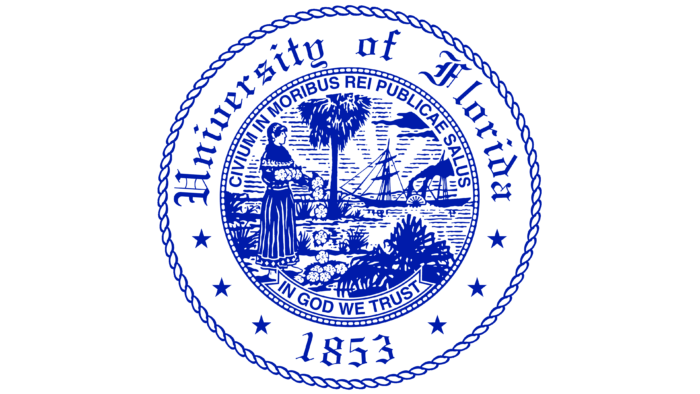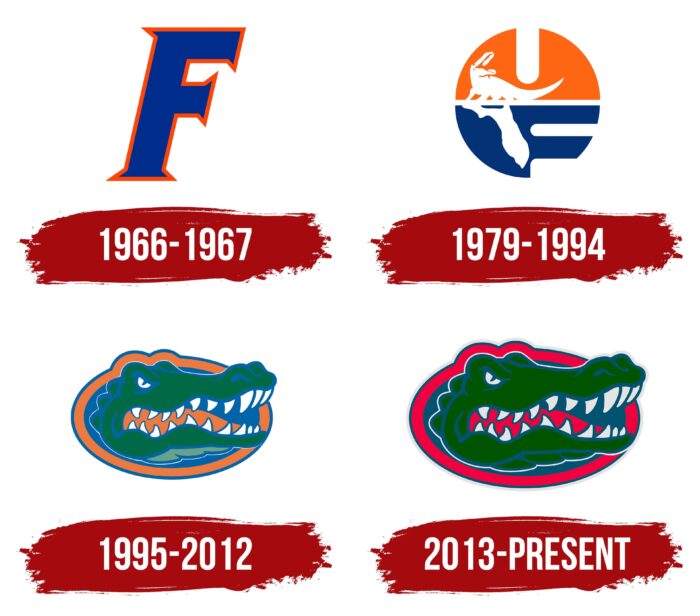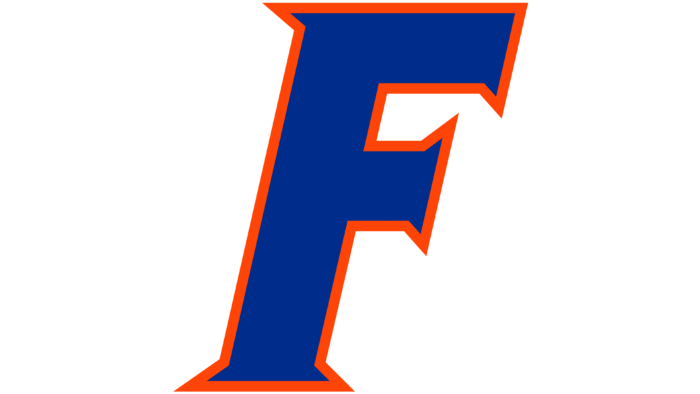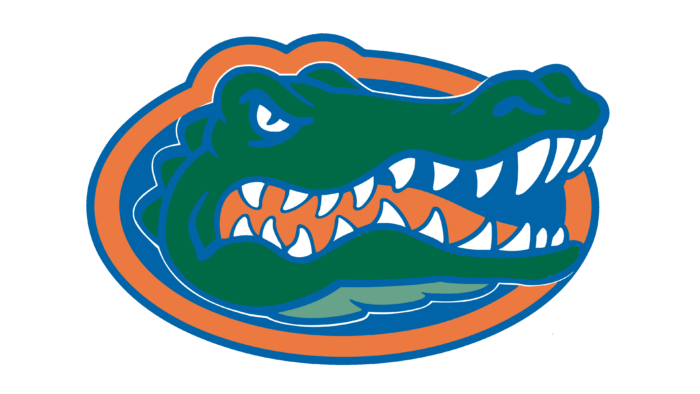 University of Florida Logo PNG
University of Florida Logo PNG
The logo of the University of Florida indicates the impressive knowledge base and experience gained by the university over the years of its existence. Based on this knowledge, new programs for teaching students are being developed, and research work is being carried out.
University of Florida: Brand overview
| Founded: | January 6, 1853 |
| Headquarters: | Gainesville, Florida, United States |
| Website: | ufl.edu |
Meaning and History
The University of Florida began with East Florida Seminary, which originated in Ocala of the same state. It was one of four forerunners of the modern college as it also included Florida Agricultural College, Normal and Industrial School St. Petersburg, and South Florida Military College. And since the seminary was the base, that is where the main administrative building is concentrated. It was also the first state-supported educational institution in Florida.
The city of Gainesville vindicated the right to have a central campus in a special campaign. And in 1905, a commission approved the endeavor. The architect of the first official buildings was William A. Edwards. He designed them in the Cathedral Gothic style. Classes in the new campus began in 1906. At that time, 105 students were admitted to the college. It received its current name in 1909, when its former name, the University of the State of Florida, was shortened.
In 1911, the leadership of the institution of higher education approved the official mascot – the alligator. At first, it appeared on school pennants that were sold, and only then was it recognized as a symbol representing the university. The reason for such a strange choice was simple – this animal is abundant in the city’s outskirts, in the freshwater waters of Florida. The mascot quickly gained popularity, and the athletic department adopted the name. At the same time, the university colors were approved: blue and orange. They are believed to connect the university to its historical roots. East Florida Seminary used orange along with black. Florida Agricultural College, on the other hand, used blue and white.
The common emblem of the college is text. It shows the name and acronym of the college. On the left side is the abbreviation “UF. It is separated by a bold band of orange from the inscription “University of Florida,” which is on the right. The first word is in block type with rectangular serifs, and the word combination is in sharp serif type with rounded corners on the inside.
Seal
The university seal is taken from the Florida state flag and is designed in black and white, whereas the original is fully colored. The center circle depicts a woman, a member of an Indian tribe. She is throwing hibiscus flowers around her. A tree rises in the distance. Although it looks like a palm tree, it is not the tree itself but its variety – palm-shaped sabal. It grows everywhere and has become an integral part of the local landscape. It is also eaten there.
Against the background of the rising sun (the print shows broad white rays amidst the blue sky) is a smoking steamer. At the top is written in Latin “Civium in moribus rei publicae salus,” at the bottom on the ribbon is written in English “In God We Trust.” The central part is surrounded by a wide ring with the name of the university and the year of its appearance. These inscriptions are written in Old English style and separated by six stars, three on each side. A-frame in the shape of a twisted rope serves as a border.
Florida Gators Logo
The athletic department is part of the Southeastern Conference and competes in NCAA Division I. It has nine men’s and 12 women’s teams. Soccer and basketball are its most successful disciplines, with several NCAA victories. The Florida Gators have also won 35 national championships and 267 individual events. In all, the program has had four emblems in its history.
1966 – 1967
The first logo was simple. It consisted of the first letter of the state name Florida. The “F” was large, italicized, with wide but pointed serifs. The primary color was navy blue, with orange as an additional color. This was the color of the trim strip, which ran the entire perimeter of the sign.
1979 – 1994
Then, the logo with the stylized acronym “UF” was used for a long time. It was encoded in two semicircles. The orange element on top had a white crocodile with its mouth open. The lower part was painted blue and consisted of an outline of the state of Florida, which was below the alligator. The emblem was circular in shape.
1995 – 2012
The university dropped the ties to both the name and the state, fixing only the image of the intimidatingly menacing animal on the logo. To emphasize the anger, the artists drew a crocodile head with its mouth wide open, with sharp fangs protruding from it. They made the tongue and frame orange and the background piece blue. The green alligator was outlined with a thin white line, making it stand out against the dark background.
2013 – today
The designers replaced the orange color with red to increase the degree of danger from Florida Gators sports teams. This is the version of the emblem in use now. No other changes followed.
The Florida Gators basketball team debuted in 1915, but until the mid-1980s, her successes were variable. This is partly due to the long absence of the stadium and coach. Exactech Arena at Stephen C. O’Connell Center opened its home arena only in 1980, and Norm Sloan became its head in 1960.
Continuous success came to the men’s team with Billy Donovan, who took up the position of coach in 1996. In 2015, he was replaced by Mike White. In the very first season, he led basketball players to a place in the NIT Tournament. The Lady Gators women’s team began speaking on behalf of the university in 1975 and a year later won the state championship.
The University of Florida began sponsoring the football program in 1906. Its athletes won eight championships in the Southeastern Conference and three national championships. Also, they participated in more than 40 state games. In the university’s history, there are 26 football coaches, the last of which is Dan Mullen.
The university football team made its debut in 1995. Its first success came in 1998 when participation in the NCAA national championship ended in a clear victory for the Gators.
Since its inception in 1907, the baseball program has glorified its native university. One of the most successful is considered the era of the trainer Andy Lopez (1995-2000), who completed the second season with 50 wins. In 2005, under the leadership of Pat McMahon, the team took first place in the SEC Championship. Before this, the team participated in two NCAA tournaments – in 2003 and 2004.
Font and Colors
The palette ties all of the visual attributes of the University of Florida’s identity: there is a dark blue hue in every logo. The university-wide and sports emblems also have two other unifying factors – the university’s abbreviated name and orange stripes.
The following types of typefaces are used in different logos of the university: Gentona, Palatino Regular, Quadon, Myriad Pro. The base colors are navy blue and orange. They are associated with the historical heritage of the university and are considered a tribute to the educational institutions that served as the base for it.
University of Florida color codes
| Coquelicot | Hex color: | #fa4616 |
|---|---|---|
| RGB: | 250 70 22 | |
| CMYK: | 0 72 91 2 | |
| Pantone: | PMS 1655 C |
| Air Force Blue | Hex color: | #003087 |
|---|---|---|
| RGB: | 0 48 135 | |
| CMYK: | 100 64 0 47 | |
| Pantone: | PMS 661 C |










